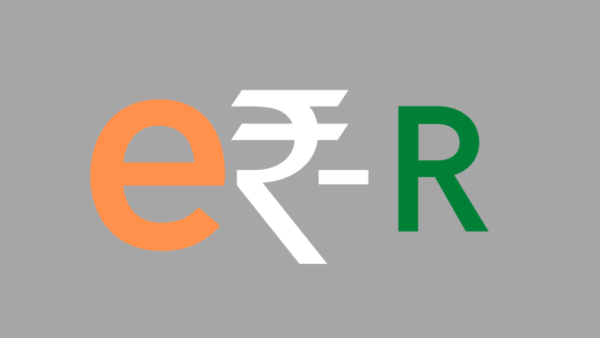The pilot launch of the Reserve Bank of India’s (RBI) retail digital currency, called the e-Rupee or digital rupee, became live on 1st December 2022. e-Rupee or digital rupee is the electronic form of sovereign currency called central bank digital currency (CBDC).
According to the Reserve Bank of India notifications issued on 7th October and 29th November 2022, RBI is piloting the retail digital rupee.
What is retail e-Rupee?
Retail digital rupee can supply access to currency for settlement and payment, and also it is a direct liability of the Reserve Bank of India. In a simple sense, retail CBDC is an electronic version of money, especially for retail transactions.
How is the retail e-Rupee?
The Reserve Bank of India released a concept note on 7th October 2022 in which the central bank said that the digital rupee is a token-based tiered architecture standard. A token-based CBDC is equivalent to banknotes, indicating whoever has it is assumed to own it. In a token-based CBDC, the individual receiving a token will confirm that his token ownership is authentic. RBI mentioned that token-based CBDC is the preferred mode for CBDC-R as it is the same as physical cash.
Who issues and manages the retail e-Rupee?
The retail digital rupee will come into circulation through the two-tier model. Reserve Bank of India issues and redeems e₹-R, while banks will provide distribution and payment services for e₹-R. This model is the same as the present physical currency management system. In the current system, banks manage activities like distributing notes to the public, account-keeping, compliance with conditions related to KYC, transaction verification, and checks on anti-money laundering and countering the terrorism of financing (AML/CFT).
What are the participating banks and cities for pilot launch of e-Rupee?
RBI identified eight banks for the retail pilot launch of the digital rupee for phase-wise implementation in four cities across the country. In the first phase, four banks – ICICI, SBI, IDFC First, and YES will participate in the pilot launch. HDFC, Bank of Baroda, Kotak Mahindra, and Union Bank of India are the other four banks that will subsequently join this pilot launch.
The pilot launch will first cover four cities – Mumbai, New Delhi, Bengaluru, and Bhubaneswar. Next, it will extend to Hyderabad, Kochi, Patna, Indore, Ahmedabad, Lucknow, Gangtok, Guwahati, and Shimla. Customers and merchants in Closed User Group (CUG) cities can now use the e-rupee or digital rupee. The pilot launch expands gradually to include more banks, users, and cities.
Retail e -Rupee is also fungible with other forms of money. The idea is primarily to shift towards a cashless culture and to provide the same benefits to end users that they get with cash in a digitized way.
Who can use retail e-Rupee?
The retail e₹-R pilot project will be available for customers and merchants in closed user groups (CUG) locations.
The retail digital rupee is open for all private sector, non-financial consumers, and businesses, as earlier said by RBI in the concept note.
How to use e₹-R?
The same denominations that are available in paper currency and coins will be available in e₹-R. Users can transact with retail digital rupee through a digital wallet offered by the selected banks in the pilot launch. The digital wallet stores e₹-R on mobile phones or devices.
Customers can create a wallet for digital tokens of e₹-R. They can use it for various payments or in use cases with participating banks in the pilot launch. The e₹-R is a legal tender backed by the central bank and is interoperable with existing bank accounts. e₹-R for can be utilized for both person-to-person (P2P) and person-to-merchant (P2M) transactions. Customers can pay merchants with QR codes shown at merchant locations.
The retail digital rupee cannot earn any interest. But it can convert into other forms of money, like bank deposits.
Reasonable, secure, and more effortless payments for all
RBI CBDC seeks to assure reasonable, secure, and more effortless payments. Since it provides a regulated alternative to cryptocurrencies, the CBDC will lead to more robust and reliable transactions, lowering the dependency on cash. The underlying technology will make transaction costs low. It is interoperable with other payment systems and will complement the existing payment methods like UPI, thus fulfilling the mobile payments ecosystem.
Source: The Economic Times | Wealth
Disclaimer: This article is published in good faith and for general information purpose only. Chandras EDU does not make any warranties about the completeness, reliability and accuracy of this information.
Check out more articles in Home page.

